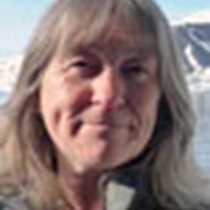The morning dawned bright and sunny, all swing bridge mechanical issues were behind us, and we were free to enter our first lock on the Caledonian Canal to begin our ascent from Muirtown Basin. The cruise to Dochgarroch was delightful, as we made our stately way past the hill of Tomnahurich and its (perfectly operating) swing bridge, alongside pastures of the lushest green, lined with trees full of the sound of birdsong; ducks and ducklings scurried out of our path as the lock gates swung open, and roe deer bounded through fields of ripe wheat. Fly fishermen stood in the murmuring waters of the River Ness enjoying the tranquility of the morning.
Soon we found ourselves sailing into the legendary waters of Loch Ness. At 23-miles long and more than 1000 feet deep in places – deeper than the North Sea - it represents the largest body of fresh water in Scotland. Stewart gave us a fascinating account of Loch Ness and its famous inhabitant, (who proved as elusive as ever), followed by a talk on iPhone photography. Before long the substantial and romantic ruins of Urquhart Castle, one of Scotland’s great medieval castles, came into view on its dramatic rock above the shores of Loch Ness. Saint Columba visited this stronghold in sixth century A.D., before his famous encounter with the monster, but the present walls date from 1230 to 1691 when the castle was finally destroyed to prevent it from falling into Jacobite hands.
Fort Augustus is a charming canal-side village at the southern end of Loch Ness. While Lord of the Glens made her ascent of the locks, some of us enjoyed a three-mile hike along the tow path. This is part of the West Highland Way, a long-distance route popular with dedicated hikers. The wayside flowers were in full bloom – meadowsweet, harebells, ragwort and rosebay willowherb – and the surrounding countryside was gorgeous in all its shades of green. At Kytra Lock House, martins busily flitted about as they fed hungry mouths in nests under the eaves of the pretty canal-side cottage.
Once we were all on board again, we sailed through Loch Oich, tree-lined Laggan Avenue, and Loch Lochy, the fourth of the lochs along the route of the canal. We exchanged cheery greetings with other wayfarers as we went, until we came to our berth at Banavie near the southern end of the canal, under the brooding slopes of Ben Nevis. At about 4406 feet she is Scotland’s highest mountain.
To round off our day, we were joined by Alastair Gibson, estate manager of Glenfinnan Estate, who shared insights with us about his experiences of managing a Highland Estate, from its timber resources and red deer habitats to overseeing the growth of tourism. It was a full and varied Scottish day of lochs, castles, locks, tow paths, villages, trees and mountains, heading ever westwards toward the coast and the islands.









